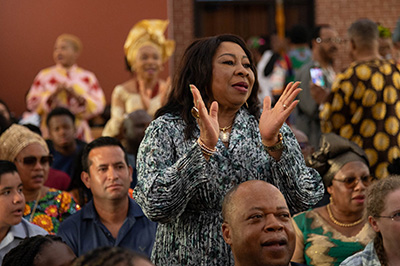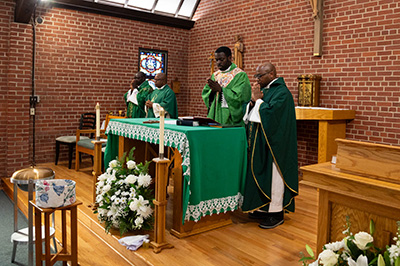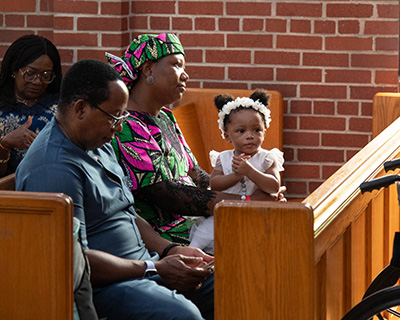Lead Me, Guide Me

CHARLOTTE — As we celebrate Black Catholic History Month this November, it is fitting to reflect on one of the most significant contributions to Black Catholic liturgical life: the Lead Me, Guide Me hymnal. This collection of sacred music is more than just a compilation of songs; it embodies the faith, culture and history of Black Catholics in the United States.
 Origins
Origins
The Lead Me, Guide Me hymnal emerged from a unique historical and cultural context, driven by the need for a liturgical resource that reflected the experiences, heritage and spiritual expressions of Black Catholics in the United States.
This hymnal’s development was a direct response to the African American Catholic community’s desire for a worship resource that was culturally resonant. While Black Catholics were a part of the Church since the earliest days of American history, their cultural contributions often were overlooked in mainstream Catholic worship.
The National Black Catholic Clergy Caucus, formed in 1968, was instrumental in advocating for a hymnal that would honor and reflect the Black Catholic spiritual tradition. Following the Civil Rights Movement, Black Catholics sought a worship experience that integrated their unique cultural expressions. Lead Me, Guide Me became a symbol of this broader movement for representation and inclusion within the Church.
While Black Catholics had long incorporated elements of gospel music, spirituals and traditional hymns into their worship services, these forms were not formally included in any official Catholic liturgical resource.
The Lead Me, Guide Me project changed this by creating a collection that blended the richness of African American sacred music with the liturgical norms of the Catholic Church.
 Dr. Horace Clarence Boyer
Dr. Horace Clarence Boyer
 Sister Thea Bowman
Sister Thea Bowman Doris M. Akers
Doris M. Akers
Key figures
Several notable figures played pivotal roles in the creation of the hymnal:
- Dr. Horace Clarence Boyer, a renowned gospel musician and scholar, served as the music editor for the first edition. His knowledge of African American sacred music helped shape the hymnal’s unique blend of gospel and Catholic traditions.
- Sister Thea Bowman, FSPA, a charismatic advocate for Black spirituality, was influential in promoting the inclusion of African American musical heritage in Catholic worship. Her advocacy inspired the ethos behind the hymnal.
- Doris M. Akers, a pioneering gospel composer, contributed the title hymn “Lead Me, Guide Me,” whose powerful message of faith continues to resonate in Black Catholic worship today.
The hymnal committee – Black Catholic clergy and lay leaders, led by Archbishop James P. Lyke – selected songs that authentically reflected the liturgical needs and worship styles of Black Catholic parishes. This work demonstrated that Catholic faith could be expressed through a variety of cultural lenses while maintaining theological integrity.
 Publications: A living document of faith
Publications: A living document of faith
The first edition of Lead Me, Guide Me, published in 1987, introduced a wide variety of musical styles, including African American spirituals and gospel music, alongside traditional Catholic hymns.
A second edition, published in 2012, reflected updates in liturgical norms and incorporated new compositions written over the previous 25 years. This edition expanded the hymnal’s repertoire to include more contemporary gospel pieces, ensuring that it continued to be a living document that fully represented Black Catholic worship.
Including gospel elements enhances Catholic liturgy
Lead Me, Guide Me holds deep cultural and spiritual significance within the Black Catholic community. Through its pages, Black Catholics hear the echoes of their ancestors’ struggles, joys and unwavering faith.
The inclusion of gospel music affirms the dignity and beauty of Black sacred traditions. Gospel, rooted in the pain of slavery and segregation, often carries messages of hope, resilience and trust in God. Songs such as “Precious Lord, Take My Hand” and “Guide My Feet” engage worshipers deeply, allowing them to express their faith communally. These compositions add energy and emotion to the beauty of Catholic liturgy, inviting full participation from the congregation.
Songs with improvisational elements and call-and-response structures characteristic of gospel music, such as “ My Light,” make the liturgy a more interactive experience. Worship becomes a dynamic communal event where the faithful are active participants in the expression of their faith.
Addressing social justice through worship
With racial justice and unity at the forefront of social conversations, the Lead Me, Guide Me hymnal remains an invaluable resource. Many of the songs reflect the historical struggle for justice and equality while carrying messages of hope and resilience. For example, “Lift Every Voice and Sing,” often referred to as the Black national anthem, resonates with themes of liberty and justice.
By addressing contemporary social justice issues through faith-based worship, this hymnal bridges the gap between spiritual life and societal challenges. It allows congregations to reflect on these themes within the sacred context of the Mass, grounding their reflections in the rich history of African American perseverance.
Continuing influence in Black Catholic worship
Today, Lead Me, Guide Me continues to play a central role in worship within Black Catholic parishes, from urban centers such as Chicago, New Orleans and Washington, D.C., to smaller, rural congregations. The hymnal is used not only in Sunday Mass but also during significant celebrations such as Black History Month and the Feast of St. Martin de Porres.
In recent years, its use has spread beyond predominantly Black Catholic communities as parishes across the United States have incorporated selections from Lead Me, Guide Me to foster a greater sense of unity and inclusivity. Gospel songs such as “Soon and Very Soon” by Andraé Crouch are now sung at mainstream Catholic services, transcending cultural boundaries while maintaining their roots in the Black gospel tradition.
As the Catholic Church embraces its global diversity, Lead Me, Guide Me enriches the liturgy by ensuring that Black Catholic traditions have a prominent and rightful place within the Church.
The hymnal stands as a testament to the Church’s commitment to recognizing and celebrating African American contributions, affirming that worship is richer and more complete when it includes the voices of all God’s people.
— Rosheene L. Adams, African American Affairs Ministry, Diocese of Charlotte
Learn more about Black Catholic history:



 Origins
Origins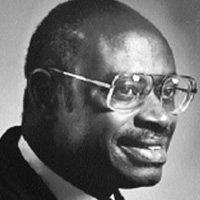

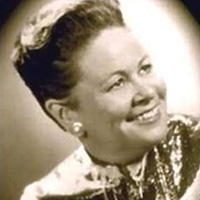
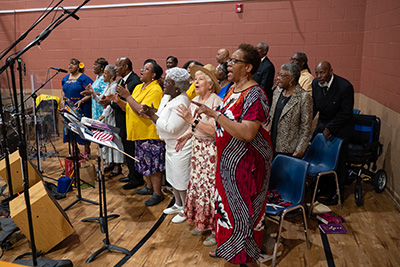 Publications: A living document of faith
Publications: A living document of faith